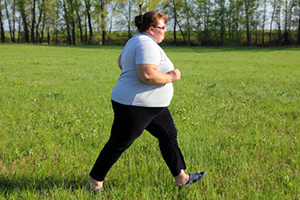 In the 21st century, most people are obsessed with their weight.
In the 21st century, most people are obsessed with their weight.
Everyone wants to lose weight to be healthier and look better.
But a new research led by John Hopkins University researchers presented an interesting study at the American College of Cardiology this year that proves that being overweight, even obese, is not always the high blood pressure devil we once believed.
Up to now, most of us have heard of body mass index and obesity as risk factors for heart disease.
Body mass index has become especially popular. Divide your weight in kilograms (80 kg) by your height in meters (1.80 m) and divide the answer by your height in meters (1.80 m) again to get your BMI (24.7). If your BMI is more than 30, you are obese and at risk of heart disease.
The only problem? On this measure, some of the fittest, healthiest people who have developed their muscles through exercise wrongly qualify as obese because of their heavy muscles.
The John Hopkins scientists have now proved that body shape is a better predictor of heart disease than BMI.
People who store fat on their waists (belly fat) and whose bodies are as a result Apple-shaped have a higher risk of developing heart disease than those who store their fat on their hips and legs and whose bodies are accordingly pear-shaped.
So why is that? Quite strange actually:
After examining 200 diabetics with no sign of heart disease, the scientists discovered that those with excess belly fat were more likely to suffer from dysfunctional left ventricles. The heart uses its left ventricle to pump blood to the rest of your body. If it is impaired, you are more likely to suffer from a critical heart failure.
According to the British Health Service (NHS), men’s waist circumference should not be more than 37 inches (94 cm) and women’s should remain under 31.5 inches (80 cm).
To measure your waist circumference, locate the point precisely halfway between the bottom of your ribs and the top of your hips. Wrap a tape measure around your body, being careful to measure after you have exhaled normally as you do while breathing.
Unfortunately, there is little you can do to change your body’s fat storage style. If it tends to store fat around your waist, you simply need to be extra careful to keep extra weight off.

 Overcoming IBD
Overcoming IBD Multiple Sclerosis
Multiple Sclerosis Banishing Bronchitis
Banishing Bronchitis Gum Disease Gone
Gum Disease Gone Overcoming Onychomycosis
Overcoming Onychomycosis Neuropathy No More
Neuropathy No More The Prostate Protocol
The Prostate Protocol Brain Booster
Brain Booster
 Ironbound
Ironbound
 Solution for Shingles
Solution for Shingles
 The Bone Density Solution
The Bone Density Solution
 The Ultimate Healing Protocol
The Ultimate Healing Protocol
 The Parkinson's Protocol
The Parkinson's Protocol
 The Chronic Kidney Disease Solution
The Chronic Kidney Disease Solution
 Overthrowing Anxiety
Overthrowing Anxiety The Fatty Liver Solution
The Fatty Liver Solution The Hypothyroidism Solution
The Hypothyroidism Solution
 The End of Gout
The End of Gout The Blood Pressure Program
The Blood Pressure Program
 The Oxigized Cholesterol Strategy
The Oxigized Cholesterol Strategy
 Stop Snoring And Sleep Apnea Program
Stop Snoring And Sleep Apnea Program
 The Arthritis Strategy
The Arthritis Strategy The Vertigo & Dizziness Program
The Vertigo & Dizziness Program The 3-Step Diabetes Strategy
The 3-Step Diabetes Strategy Hemorrhoids Healing Protocol
Hemorrhoids Healing Protocol The Erectile Dysfunction Master
The Erectile Dysfunction Master Weight Loss Breeze
Weight Loss Breeze The IBS Program
The IBS Program The Insomnia Program
The Insomnia Program The Migraine and Headache Program
The Migraine and Headache Program The Neck Pain Solution
The Neck Pain Solution The Menopause Solution
The Menopause Solution The Ejaculation Master
The Ejaculation Master The TMJ Solution
The TMJ Solution The Acid Reflux Solution
The Acid Reflux Solution The Fibromyalgia Solution
The Fibromyalgia Solution The Psoriasis Strategy
The Psoriasis Strategy